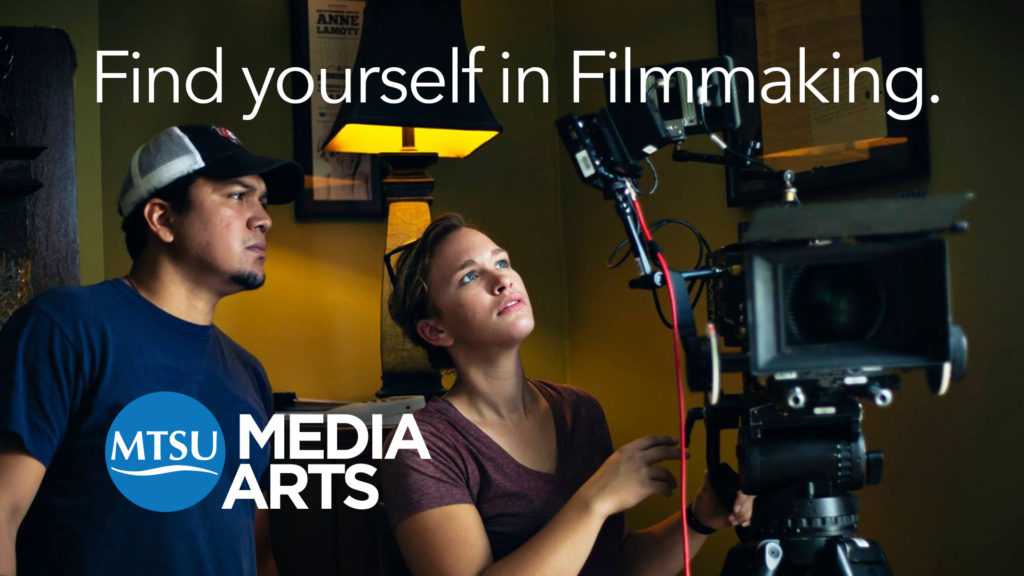No longer the exclusive domain of Hollywood studios, every modern organization needs filmmakers who have the skills to influence, inform, inspire or entertain. MTSU Film students learn the art of cinematic storytelling that can be applied to any genre. There’s something for everybody in Filmmaking – whether it’s a leading or supporting position, MTSU’s film students are able to experience a variety of roles and customize their curriculum to find their personal fit. Facilities include a large stock of professional-quality field production gear that students can check out for their assignments. The program builds on a solid foundation of film theory and film history, and provides practical hands-on learning opportunities from day one to graduation. The Filmmaking capstone course challenges graduating seniors to produce film projects, demonstrating not only their skills and knowledge, but also the type of work they wish to pursue after graduation. It’s the perfect opportunity to create a powerful portfolio piece to launch a career.
To view the required curriculum for the Filmmaking major in the 2020-21 catalog, click here.

And for those who are interested in learning about both filmmaking and live television production, MTSU’s classic, blended Video and Film Production program remains available. Students can also choose MTSU’s new Live Production concentration as well.
For folks looking for clarification on the differences between Filmmaking and Live Production, the following is a simplified explanation.
In Filmmaking, the content is typically shot with a single camera – most often with a script. The recorded material is then taken to a postproduction environment where it is edited and otherwise transformed through an often-lengthy creative process to create a finished end-product. Most movies, TV dramas, commercials, music videos and documentaries are created this way.
Live Production is shot simultaneously with multiple cameras. Images from those cameras and other sources of sound and images are sent live to a central control room where a team of experts collaborate in real time to create a finished end product that is often published immediately on live television or other means, usually with no postproduction. Live sports, awards shows, game shows, cooking shows, and variety shows and follow this production model.
There are similarities in the skills, tools, and techniques between the two, but there are equally critical differences. Establishing two separate concentrations fosters deeper and more focused learning for the students. These new concentrations will also provide clearer academic paths, ultimately contributing to greater industry success for our students. And that’s what it’s all about.
